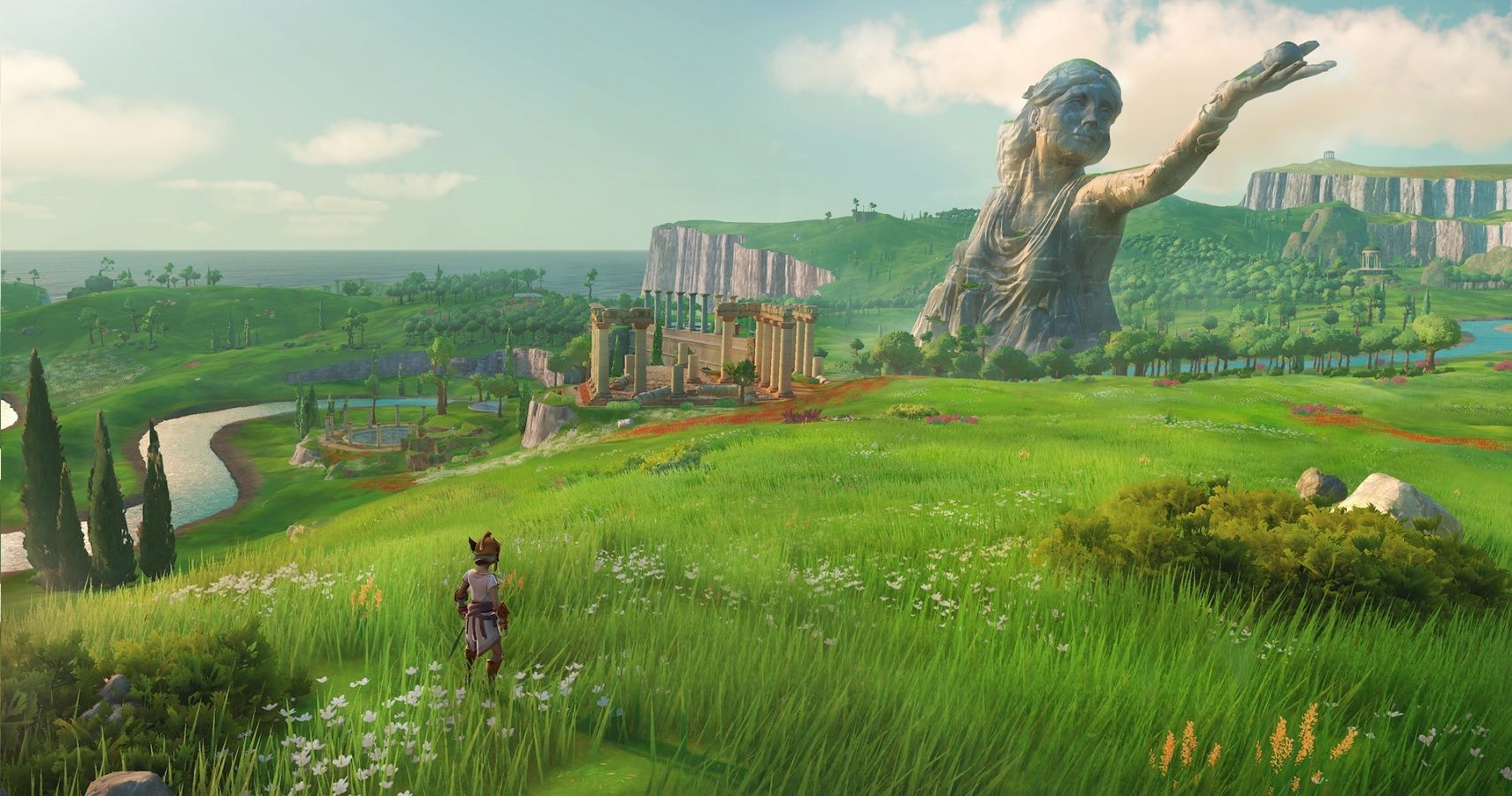The Evolution Of Immersive Worlds: A Comprehensive Look At 3D Online Games
The Evolution of Immersive Worlds: A Comprehensive Look at 3D Online Games
Related Articles: The Evolution of Immersive Worlds: A Comprehensive Look at 3D Online Games
Introduction
In this auspicious occasion, we are delighted to delve into the intriguing topic related to The Evolution of Immersive Worlds: A Comprehensive Look at 3D Online Games. Let’s weave interesting information and offer fresh perspectives to the readers.
Table of Content
The Evolution of Immersive Worlds: A Comprehensive Look at 3D Online Games
![]()
The advent of the internet in the late 20th century revolutionized communication and information access. However, its impact went far beyond mere communication. It birthed a new form of entertainment: online games. These virtual playgrounds, initially text-based and limited in scope, quickly evolved into sophisticated 3D worlds, offering players a level of immersion and interaction previously unimaginable. This evolution, driven by technological advancements and the insatiable human desire for engaging experiences, has shaped the landscape of entertainment and fostered a global community of gamers.
The Genesis of 3D Online Games:
The origins of 3D online games can be traced back to the early 1990s with games like "Neverwinter Nights" and "Meridian 59." These games, while rudimentary by today’s standards, introduced the concept of persistent online worlds where players could interact with each other and engage in collaborative activities. The release of "Ultima Online" in 1997 marked a significant milestone, establishing the foundation for the modern massively multiplayer online role-playing game (MMORPG) genre. This game featured a vast, open world populated by other players, allowing for social interaction, cooperative quests, and even player-driven economies.
The Technological Leap: Graphics and Gameplay:
The development of 3D graphics technology was crucial in propelling online games into a new era. Advancements in rendering techniques, polygon modeling, and texture mapping enabled the creation of increasingly realistic and immersive virtual environments. This allowed for more detailed character models, complex landscapes, and dynamic lighting effects, enhancing the visual fidelity and overall player experience.
The shift to 3D also revolutionized gameplay mechanics. Games could now incorporate more intricate combat systems, physics-based interactions, and dynamic environments that responded to player actions. This opened up new possibilities for gameplay, leading to the development of diverse game genres within the online realm, including first-person shooters, strategy games, and simulation games.
The Rise of the MMORPG:
The emergence of the MMORPG genre, exemplified by games like "EverQuest" and "World of Warcraft," solidified the prominence of 3D online games. These games offered vast, persistent worlds, compelling storylines, and intricate character progression systems, captivating players for hundreds of hours. The social aspect of MMORPGs became a defining feature, fostering strong communities and friendships among players.
The success of these games fueled further innovation, leading to the development of sophisticated game engines, advanced networking technologies, and user-friendly interfaces. This allowed for the creation of even larger and more complex worlds, with thousands of players interacting simultaneously.
Beyond the Fantasy: Diversification and Innovation:
The popularity of MMORPGs paved the way for the diversification of 3D online games. Genres like first-person shooters, with titles like "Counter-Strike" and "Call of Duty," gained immense popularity, offering competitive gameplay and a strong focus on skill and strategy. Strategy games, such as "StarCraft" and "Age of Empires," became esports staples, attracting large audiences and professional players.
The boundaries of online gaming continued to blur with the rise of sandbox games like "Minecraft" and "Grand Theft Auto Online." These games offered players unparalleled freedom to create, explore, and interact in vast, open worlds, fostering creativity and community engagement.
The Impact of 3D Online Games:
The impact of 3D online games extends far beyond the realm of entertainment. These games have fostered a global community of players, bridging cultural and geographic boundaries. They have also become a significant force in the esports industry, generating substantial revenue and attracting millions of viewers worldwide.
Furthermore, 3D online games have served as a platform for social interaction, providing opportunities for players to connect with others who share common interests. They have also been used as tools for education, allowing players to learn new skills and explore different cultures through immersive experiences.
FAQs about 3D Online Games:
1. What are the benefits of playing 3D online games?
3D online games offer numerous benefits, including:
- Enhanced Social Interaction: Players can connect with others from around the world, fostering friendships and communities.
- Improved Cognitive Skills: Games often require strategic thinking, problem-solving, and quick decision-making, sharpening cognitive abilities.
- Stress Relief and Relaxation: Engaging in immersive gameplay can provide a welcome escape from daily stresses.
- Learning and Education: Some games offer educational content, allowing players to learn new skills or explore different subjects.
2. Are 3D online games safe for children?
The safety of 3D online games for children depends on several factors, including the game’s content, the age rating, and parental supervision. It is crucial for parents to research games thoroughly, set appropriate time limits, and monitor their children’s online activity.
3. What are the risks associated with playing 3D online games?
While 3D online games offer numerous benefits, there are also potential risks:
- Addiction: Excessive gaming can lead to addiction and negatively impact other aspects of life.
- Cyberbullying: Online communities can be susceptible to bullying and harassment.
- Privacy Concerns: Players should be aware of their privacy settings and the potential for data collection.
4. How do I choose the right 3D online game?
Choosing the right game depends on individual preferences and interests. Consider factors like:
- Genre: What type of game are you interested in (MMORPG, FPS, strategy)?
- Gameplay: What kind of gameplay experience are you looking for (competitive, collaborative, sandbox)?
- Community: Do you prefer a large and active community or a smaller, more intimate one?
5. What are the future trends in 3D online games?
The future of 3D online games is likely to be characterized by:
- Enhanced Realism: Advances in graphics technology will continue to enhance the realism of virtual worlds.
- Virtual Reality Integration: VR technology will offer even more immersive gameplay experiences.
- Artificial Intelligence: AI will play a greater role in creating dynamic and responsive environments.
- Cross-Platform Play: Games will become more accessible across different platforms, fostering a larger and more diverse player base.
Tips for Playing 3D Online Games:
- Set Time Limits: Allocate specific time slots for gaming to avoid excessive play.
- Take Breaks: Regular breaks are crucial to prevent eye strain and fatigue.
- Stay Hydrated: Drink plenty of water to stay focused and energized.
- Maintain a Healthy Diet: Avoid excessive snacking and maintain a balanced diet.
- Engage in Other Activities: Balance gaming with other hobbies and activities.
- Be Aware of Your Surroundings: Take breaks to avoid becoming isolated.
- Communicate with Others: Engage in social interactions with friends and family.
Conclusion:
3D online games have evolved significantly since their inception, transforming from rudimentary virtual worlds into immersive experiences that captivate millions worldwide. Their impact extends far beyond entertainment, fostering communities, promoting social interaction, and even serving as tools for education. As technology continues to advance, the future of 3D online games holds immense promise for even more engaging and immersive experiences, further blurring the lines between the virtual and the real. By embracing the evolving landscape of online gaming while maintaining responsible practices, players can enjoy the countless benefits these digital worlds offer.







Closure
Thus, we hope this article has provided valuable insights into The Evolution of Immersive Worlds: A Comprehensive Look at 3D Online Games. We thank you for taking the time to read this article. See you in our next article!